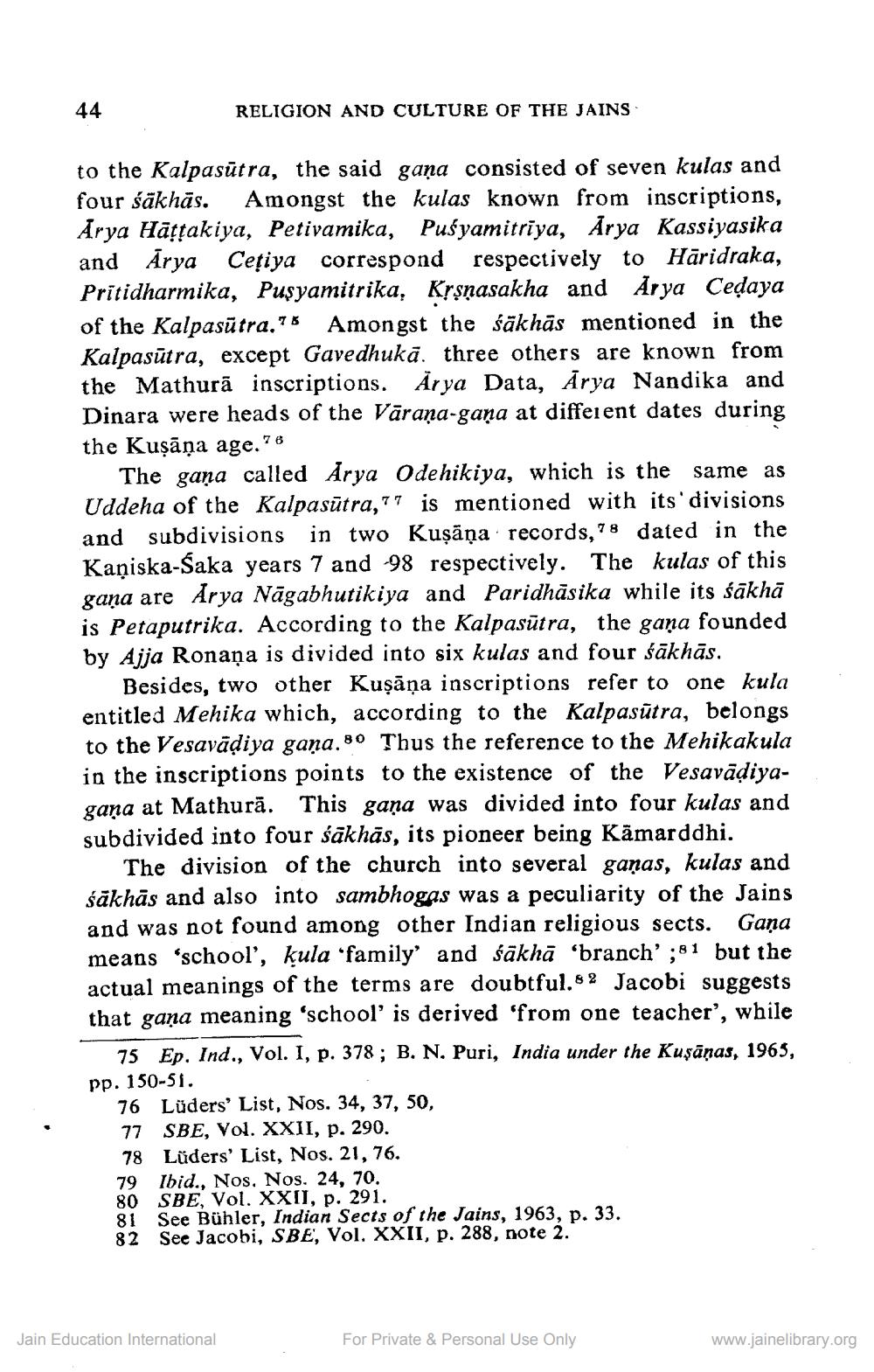________________
44
RELIGION AND CULTURE OF THE JAINS
to the Kalpasūtra, the said gaña consisted of seven kulas and four sākhās. Amongst the kulas known from inscriptions, Arya Hāțțakiya, Petivamika, Puśyamitriya, Arya Kassiyasika and Ārya Cețiya correspond respectively to Hāridraka, Pritidharmika, Puşyamitrika, Krşņasakha and Arya Cedaya of the Kalpasūtra.75 Amongst the sākhās mentioned in the Kalpasūtra, except Gavedhukā. three others are known from the Mathurā inscriptions. Arya Data, Ārya Nandika and Dinara were heads of the Vāraṇa-gana at different dates during the Kuşāņa age.76
The gaṇa called Arya Odehikiya, which is the same as Uddeha of the Kalpasūtra,77 is mentioned with its' divisions and subdivisions in two Kuşāņa records, 78 dated in the Kaņiska-Saka years 7 and 98 respectively. The kulas of this gana are Arya Nāgabhutikiya and Paridhāsika while its sākhā is Petaputrika. According to the Kalpasūtra, the gaña founded by Ajja Ronaņa is divided into six kulas and four śākhās.
Besides, two other Kuşāņa inscriptions refer to one kula entitled Mehika which, according to the Kalpasūtra, belongs to the Vesavādiya gaña. 80 Thus the reference to the Mehikakula in the inscriptions points to the existence of the Vesavādiyagana at Mathurā. This gaṇa was divided into four kulas and subdivided into four sākhās, its pioneer being Kämarddhi.
The division of the church into several gaņas, kulas and sākhās and also into sambhogas was a peculiarity of the Jains and was not found among other Indian religious sects. Gaņa means 'school', kula ‘family' and sākhā 'branch';81 but the actual meanings of the terms are doubtful.8 2 Jacobi suggests that gaña meaning 'school' is derived 'from one teacher', while
75 Ep. Ind., Vol. I, p. 378; B. N. Puri, India under the Kuşāņas, 1965, pp. 150-51.
76 Lüders' List, Nos. 34, 37, 50, 77 SBE, Vol. XXII, p. 290. 78 Lüders' List, Nos. 21, 76. 79 Ibid., Nos. Nos. 24, 70. 80 SBE, Vol. XXII, p. 291. 81 See Bühler, Indian Sects of the Jains, 1963, p. 33. 82 See Jacobi, SBE, Vol. XXII, p. 288, note 2.
Jain Education International
For Private & Personal Use Only
www.jainelibrary.org




